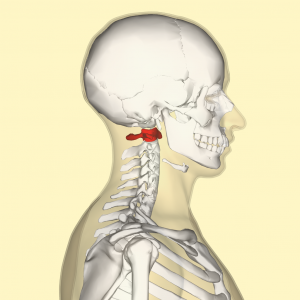Atlas Adjustment
The atlas is the first cervical vertebra, and along with the second vertebra, the axis forms the joint connecting the skull and the spine.
The atlas (C1) not only carries the skull, but is also responsible for the suspension, equilibrium and management of the spine and human skeleton.
The Atlas Profilax realignment is a neuromuscular massage technique that focuses on the short muscles of the neck - the suboccipital muscles - that surround and stabilize the head joints (base of the skull, atlas and axis vertebras).
Correction and Self Healing
Rene C. Schumperli developed a revolutionary method that successful aligns the atlas vertebra without cracking, rough handling or traction, in only one session. After the vibrational massage of the short muscles of the neck, the atlas can move in its natural position.
The release of muscular tension in the neck corrects ligamentous and muscular compression on the atlas vertebra, producing a positive effect on the body and stimulating the healing capacity.[1]
Atlas (Anatomy)
In anatomy, the atlas (C1) is the most superior (first) cervical vertebra of the spine. It is named for the Atlas of Greek mythology, because it supports the globe of the head which is the skull. The atlas is the topmost vertebra and with the axis forms the joint connecting the skull and spine. The atlas and axis are specialized to allow a greater range of motion than normal vertebrae. They are responsible for the nodding and rotation movements of the head.
The atlanto-occipital joint allows the head to nod up and down on the vertebral column. The dens acts as a pivot that allows the atlas and attached head to rotate on the axis, side to side. The atlas's chief peculiarity is that it has no body. It is ring-like and consists of an anterior and a posterior arch and two lateral masses. The atlas and axis are important neurologically because the brain stem extends down to the axis. [2]


